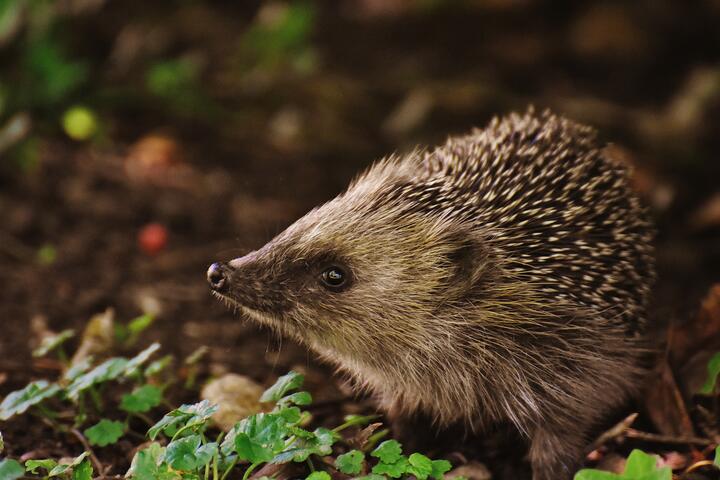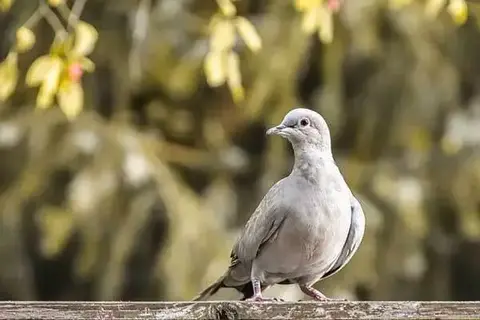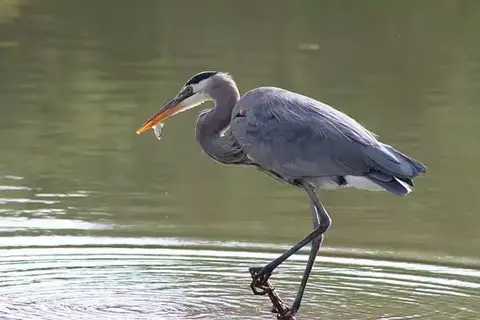What Do Hedgehogs Eat In The Wild And At Home?
Camilo WalkerEver since we were children, we have been familiar with fairy tales and cartoons about hedgehogs , in which the main character hoards fruit and mushrooms for the winter. But this is just a made-up myth. In fact, hedgehogs never stock up to survive the winter. Both in the wild and at home, they accumulate fat from spring through late fall. To do this, hedgehogs need to eat a lot.
What do hedgehogs eat in the wild?
 Photo by Pixabay on pexels
Photo by Pixabay on pexelsHedgehogs eat a variety of foods because they are omnivores. Most often these are amphibians, insects, slugs, caterpillars, earthworms. In addition to animals, hedgehogs eat fruits and berries.
In addition to the usual beetles and snakes, the hedgehog eats very poisonous representatives of them, such as viper, blister beetle, May crunch, hairy beetle. After such a meal the animal does not get sick and does not die in a few seconds, because the body of the hedgehog is resistant to various poisons.
In the forest, hedgehogs also eat mice, but this happens as an exception. The mouse is very nimble and the hedgehog can not keep up with it, but if it gets in the way, the hedgehog eats it. Also, the animal likes to eat clutches and nestlings of birds that have settled their nests on the ground.
What do hedgehogs eat at home?
Most often, the hedgehog at home eats the same as his owner. But give the food that you eat yourself in no case can not. Food from the table will kill the animal, and you yourself will not know why the hedgehog died so early. The best food for the pet hedgehog is specialized feed. But it is very difficult to get them in the CIS countries. Premium cat food can be the best option, and only for the first few days. Then you will need to plan a special menu for the new lodger.
Products you can feed your hedgehog at home:
•The cooked meat of lean varieties (chicken, beef, turkey);
•chicken tripe;
•berries and fruits in small quantities (pears, apples, strawberries, raspberries, blueberries);
•Vegetables, like fruit, should also be given in small quantities (cucumbers, sweet peppers, pumpkin, carrots);
•Once a week you can give raw chicken or quail eggs;
•also, give live insects.
Make sure all food is fresh and at room temperature. Be sure to clean up leftovers in the cage so that the hedgehog doesn’t eat spoiled food and gets poisoned.
Foods that should not be given to hedgehogs:
•onions and garlic;
•Exotic fruits (all citrus fruits, pineapples, avocados, mangoes, etc.);
•dried fruit (due to poor patency);
•Grapes (possibility of choking on seeds);
•Seeds and nuts (because they are very fatty and will give you an upset stomach);
•fast food;
•milk.
The legend that hedgehogs like milk are very common, but in fact, milk is destructive for hedgehogs because their body does not absorb lactose. While a long-lived hedgehog lives 5 to 6 years, a hedgehog that drinks milk will not live a year.
Another important point is that the hedgehog should always have fresh drinking water in his cage.
Remember, hedgehogs are predatory animals, so his diet should include protein-rich food of animal origin.
Where do hedgehogs live?
 Photo by Pixabay on pexels
Photo by Pixabay on pexelsThere are 23 species of this class in the world, they are distributed all over the globe, and in Russia – almost everywhere. Only South America, Australia, Madagascar, and Antarctica are not inhabited by hedgehogs.
Their settlements can be found under tree roots, in thorny bushes, in a heap of brushwood, or an abandoned rodent’s burrow. Hedgehogs live individually and protect their clumpy areas. At such sites, hedgehogs build individual nests, which they line inside with moss, dry leaves, and grass.
Hedgehogs hunt at night and go to bed during the day, curled up in a ball. With the onset of the winter cold – the end of September, beginning of October through April, when the air temperature rises above +15 degrees, the hedgehogs hibernate. The frequency of heartbeat and respiratory activity at this time is greatly reduced. If a hedgehog has not managed to accumulate fat during the summer period, it will certainly die of starvation death during hibernation.
In unfavorable years, up to 45% of adults and up to 80% of young hedgehogs die during hibernation. In nature, hedgehogs live from 3 to 7 years, but in domestic conditions, their life span extends up to 15 years.
Who loves animals, does not give up keeping hedgehogs, especially it is not difficult.
Benefits and harms of hedgehogs
The hedgehog easily adapts to life next to humans, and very often he is kept as a pet. As early as the Romans in the 4th century B.C. raised hedgehogs for meat, they baked it in clay along with needles. Something widely used hedgehog hides for making leather.
The common hedgehog is useful in exterminating harmful insects and harmful in that it eats chicks and eggs of birds that nest on the ground.
What do hedgehogs eat? Hedgehogs diet
 Photo by Pixabay on pexels
Photo by Pixabay on pexelsIf you are a new pet owner, you might be wondering what do hedgehogs eat. The good news is that hedgehogs are not picky when it comes to their diet. They can eat just about anything, but they do prefer hard foods and meat. Horse mackerel is the perfect food for a hedgehog, as its meat is comparable to that of farm animals. However, if you have a pet who is not accustomed to eating soft foods, consider giving them some horse mackerel instead. The same goes for bananas, stoned fruits, and melons. Even vegetables and cooked fruits are fine for hedgehogs, but the fiber content in these items is too high for them to digest.
Although they have poor eyesight, hedgehogs make up for their lack of sight with their superb sense of smell and are perfectly content to rummage through human food waste to feed. Aside from berries, they also eat insects and other invertebrates, which account for 75% of their diet. It is important to note that the proportions of these foods vary with the seasons and location. They eat beetles, caterpillars, earthworms, and ants, as well as the occasional slug or snail, but not grasshoppers. These are too fast for a hedgehog to catch and eat.
When feeding your pet, always make sure that the food contains the right proportion of calcium to phosphorus. The ideal ratio is 2:1:1. Any food outside this range can be unhealthy for hedgehogs, so avoid giving them these foods. As a rule, they should eat a handful of vegetables and fruit each evening. If you do get a pet hedgehog, remember that they are a big responsibility. Be sure to consult with a vet or exotic pet expert before giving your new companion home. You can avoid some common mistakes by ensuring that you are providing them with the best possible care.
When you decide to feed a hedgehog, you should try to mimic their natural diet. You should choose fresh tomato slices, green beans, squash, and other vegetables. Avoid starchy vegetables, including potatoes and corn. In addition to these, you can offer your pet chicken and eggs, which are high in protein and low in fat. In addition, you can also give your pet low-fat canned dog or cat food in small amounts. As for the primary food, you should offer a variety of nutritious foods and fruits.
Although there are many types of food available for hedgehogs, they do not eat many of them. The most popular foods for them are chicken and berries. Some hedgehogs prefer soft food, while others prefer hard food. If you want your hedgehog to enjoy a varied diet, you should give it a high-quality, low-fat diet that is rich in vegetables and fruits. Choosing a balanced diet is essential for the health and well-being of your pet.
Generally, hedgehogs do not eat many different types of food. Nonetheless, they will happily eat a variety of vegetables and fruits, which are available at grocery stores and online. You should be careful with the food you give them. They have very different dietary requirements and will require more careful consideration. Some foods that you can’t feed a hedgehog include grapes and avocado, which are toxic to them.
The most important food for hedgehogs is insects. Insects and crickets are the most common foods for pet hedgehogs. They also enjoy roaches and earthworms. Unlike other pets, they will eat these insects. If you can’t find them in the wild, you can buy commercially produced bugs. They are safer for your pet. There are no specific rules when it comes to the foods they can eat.
You should consider a balanced diet for your pet. A balanced diet is vital for a healthy and happy animal. Despite their size and weight, a hedgehog’s diet is full of worms, beetles, and other insects. They also eat small insects and lizards and will happily eat cake and bread. But they need more than just vegetables and worms. Hence, it is important to provide a varied diet.
- WildlifeWhat Do Doves Eat In The Wild And At Home?

- BirdsCan A Parrot Eat A Cucumber?By Khai Dove

- DogsDoggie Relaxing MassageBy Evelyn Star

- DogsCan Chinchilla Eat Carrots?By Karla Miller

- Birds50 Interesting And Surprising Facts About RavensBy Charlotte Green

- DogsPreparing For Puppy: Must Have Tips For Your Puppy’S First WeekBy Camilo Walker

- RodentsWhat Food Is Best For Guinea Pigs?By Camilo Walker

- BirdsInteresting Facts About Great Blue HeronBy Nolan Foster

- InsectsAll About Ants With White WingsBy Amelia B

- InsectsInteresting Facts About Fire AntsBy Charlotte Green
